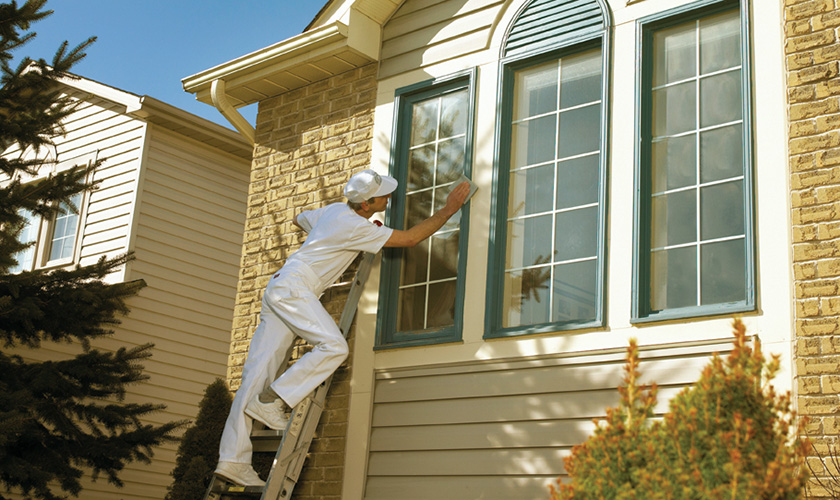- txhomeroofing@gmail.com
- 512-736-0458
- Pflugerville, Texas. USA
Exterior Painting
Exterior Painting
Exterior painting refers to the process of painting the outer surfaces of a building or structure. It involves applying paint or protective coatings to the exterior walls, doors, windows, trims, and other exterior components of a building. Exterior painting serves both aesthetic and functional purposes, enhancing the appearance of a structure while also providing protection against the elements.
Here are some key points to consider when it comes to exterior painting:
Surface Preparation: Before painting, proper surface preparation is crucial. This includes cleaning the surfaces to remove dirt, dust, and loose paint, as well as repairing any cracks, holes, or damage. Depending on the condition of the surfaces, power washing, scraping, sanding, and priming may be necessary.
Choosing the Right Paint: Selecting the appropriate paint is important for achieving a long-lasting and durable finish. Exterior paints are specifically formulated to withstand outdoor conditions, such as UV rays, temperature fluctuations, moisture, and mildew. Consider factors like the type of surface, climate, and desired appearance when choosing the paint.
Color Selection: Exterior paint colors can significantly impact the overall look and curb appeal of a building. It’s important to consider the architectural style, surrounding environment, and any local regulations or restrictions when selecting colors. Testing paint samples on the actual surfaces can help visualize how the colors will appear in different lighting conditions.
Application Techniques: Exterior painting can be done using various techniques, including brush, roller, or spray application. The choice of technique depends on factors such as the size of the surface, type of paint, and desired finish. Some areas may require specific tools or equipment, such as scaffolding or ladders, for safe and efficient painting.
Weather Considerations: Weather conditions play a crucial role in exterior painting. It’s best to undertake the painting project during dry, mild weather, preferably when the temperature is between 50°F and 90°F (10°C and 32°C). Avoid painting during rainy or extremely hot and humid conditions, as it can affect the paint’s drying and adhesion.
Safety Precautions: When painting exteriors, it’s important to prioritize safety. Use appropriate personal protective equipment (PPE), such as goggles, gloves, and masks, when handling paint and chemicals. Ensure proper ventilation when working with solvent-based paints. Take necessary precautions while working at heights to prevent accidents.
Maintenance and Care: Regular maintenance and care are essential to preserve the exterior paint’s appearance and longevity. Periodically inspect the painted surfaces for any signs of wear, damage, or peeling. Touch up any areas that require attention to prevent further deterioration and to maintain the protective barrier provided by the paint.
While smaller exterior painting projects can be tackled by homeowners, larger or more complex jobs may require professional painters with expertise in exterior painting techniques and equipment. Hiring professionals can ensure a high-quality finish and save time and effort.
It’s important to note that specific techniques, materials, and regulations may vary depending on your location, climate, and building type. Consulting with local experts or professionals will provide you with the most accurate guidance for your specific project.

